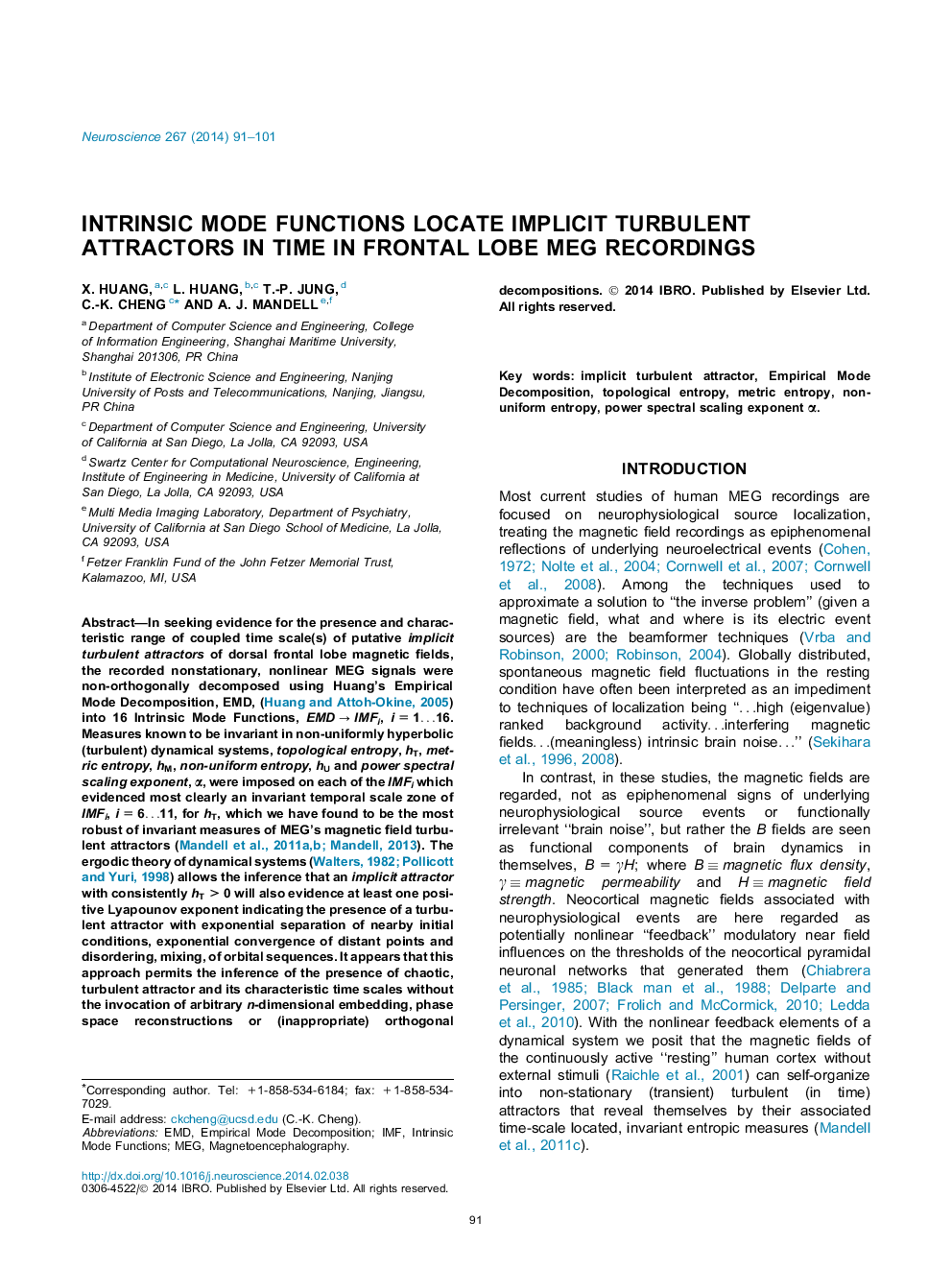| Article ID | Journal | Published Year | Pages | File Type |
|---|---|---|---|---|
| 6273948 | Neuroscience | 2014 | 11 Pages |
Abstract
In seeking evidence for the presence and characteristic range of coupled time scale(s) of putative implicit turbulent attractors of dorsal frontal lobe magnetic fields, the recorded nonstationary, nonlinear MEG signals were non-orthogonally decomposed using Huang's Empirical Mode Decomposition, EMD, (Huang and Attoh-Okine, 2005) into 16 Intrinsic Mode Functions, EMD â IMFi, i = 1â¦16. Measures known to be invariant in non-uniformly hyperbolic (turbulent) dynamical systems, topological entropy, hT, metric entropy, hM, non-uniform entropy, hU and power spectral scaling exponent, α, were imposed on each of the IMFi which evidenced most clearly an invariant temporal scale zone of IMFi, i = 6â¦11, for hT, which we have found to be the most robust of invariant measures of MEG's magnetic field turbulent attractors (Mandell et al., 2011a,b; Mandell, 2013). The ergodic theory of dynamical systems (Walters, 1982; Pollicott and Yuri, 1998) allows the inference that an implicit attractor with consistently hT > 0 will also evidence at least one positive Lyapounov exponent indicating the presence of a turbulent attractor with exponential separation of nearby initial conditions, exponential convergence of distant points and disordering, mixing, of orbital sequences. It appears that this approach permits the inference of the presence of chaotic, turbulent attractor and its characteristic time scales without the invocation of arbitrary n-dimensional embedding, phase space reconstructions or (inappropriate) orthogonal decompositions.
Keywords
Related Topics
Life Sciences
Neuroscience
Neuroscience (General)
Authors
X. Huang, L. Huang, T.-P. Jung, C.-K. Cheng, A.J. Mandell,
